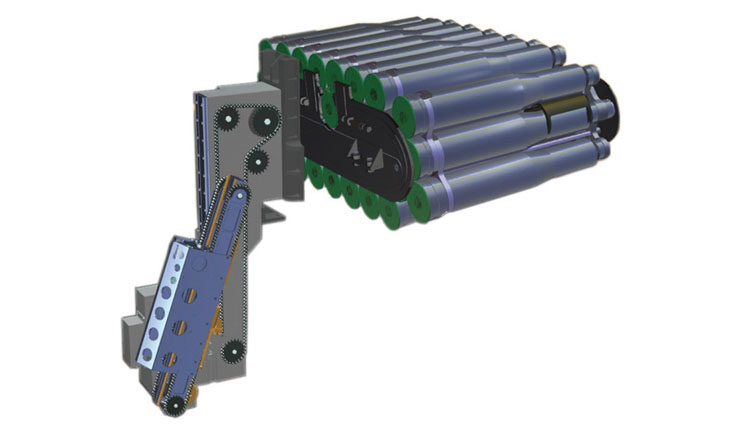SOURCE: IDRW.ORG


In a significant development for India’s defense modernization, the Combat Vehicles Research and Development Establishment (CVRDE), a key laboratory under the Defence Research and Development Organisation (DRDO), is likely to partner with Jeanuvs Private Limited to develop autoloaders for the Indian Army’s Future Ready Combat Vehicle (FRCV) “Ranjeet” project. This collaboration, stemming from a Request for Proposal (RFP) issued by CVRDE in January 2025, marks a crucial step in enhancing the technological capabilities of India’s next-generation armored fighting vehicles (AFVs).
The FRCV “Ranjeet” project, named after the iconic Maharaja Ranjit Singh, aims to replace the Indian Army’s aging fleet of T-72 main battle tanks with a modern, indigenous platform designed for future warfare. Envisioned as a multi-role combat vehicle, the FRCV is expected to feature advanced technologies like AI-driven systems, network-centric warfare capabilities, and modular armor, ensuring superior firepower, mobility, and survivability across diverse terrains . The project, which received Acceptance of Necessity (AoN) from the Defence Acquisition Council (DAC) in September 2024, plans to induct 1,770 units in three phases by 2030, with each phase incorporating incremental technological advancements .
A key component of the FRCV’s design is its autoloader system, which automates the loading of ammunition into the main gun, reducing crew requirements, increasing firing rates, and enhancing combat efficiency. The integration of autoloaders aligns with global trends in tank development, positioning the Indian Army to meet the demands of high-intensity, rapid-response operations .
Autoloaders are a game-changer for modern AFVs, offering several tactical advantages. By automating the ammunition loading process, they reduce the crew size—potentially from four to three—freeing up space, lowering the tank’s weight, and minimizing human error in high-stress combat scenarios. The FRCV “Ranjeet,” designed to weigh around 55 tons with a 1500 HP engine, will benefit from faster firing rates, enabling it to engage targets more effectively, including those beyond the line of sight . Additionally, autoloaders enhance crew safety by isolating ammunition storage, a critical feature given the evolving threats from drones, loitering munitions, and advanced anti-tank systems observed in conflicts like the Russia-Ukraine war.
The FRCV’s design parameters, revised in 2023, emphasize all-around protection, including top-attack countermeasures and modular armor, making the autoloader’s integration vital for maintaining a compact, agile platform capable of operating in varied terrains—from deserts to high-altitude regions . CVRDE’s focus on autoloaders also aligns with the project’s broader goal of creating a family of vehicles, including self-propelled artillery, air defense systems, and bridge-layer tanks, all built on the FRCV platform .
NOTE : Article cannot be reproduced without written permission of idrw.org in any form even for YouTube Videos to avoid Copy right strikes. Websites doing illegal reproductions will get DMCA and Legal Notices.